Taking Antarctica from the editing room of the Film Bureau to the screen at the Woods Hole Film Festival was beyond surreal. It’s been well over a year since production on this project first began and to see all the pieces come together for the first time was an unforgettable experience.
Beyond the Editing Room: A Sneak Peak of “Antarctica” at the Woods Hole Film Fest. by Film Student Gabrielle Gatdula
The Climax of Charcot Island, by Film Students Taban Khan and Gabrielle Gatdula
This summer, we decided to tackle the climax of the Beyond the Ice story, Charcot Island. The scientists of the LTER had been anticipating this leg of their trip the most because they had been unable to reach it last year. The most important piece of their science lied here, and it was paramount that they were able to include Charcot in their research.
The voice of our story, Jen Mannas, emphasizes this importance. A scientist who studies penguins, she led the team that studied Charcot this year along with Hugh Ducklow, the lead scientist of the LTER at Palmer Station. According to Mannas, Charcot is the southernmost Adelie penguin population on the Antarctic Peninsula. Since it hasn?t started to change yet, it?s a good indicator of what the Antarctic Peninsula used to be like. By studying how the Adelie penguins have evolved to live in places like Palmer and Avian Island compared to Charcot, the scientists can see just how much the Western Antarctic Peninsula has changed. All of this research will hopefully culminate into a better understanding of how the global system may change.
What we hope by the end of this summer is to put together a sequence that entails the experiences that Jen, Hugh, and the Captain went through and the vivid obstacles they faced. From the miles of pack ice ahead of the Gould to the struggles that penguins face as they climb up the rock face, Charcot Island is a total adventure.
Hesitation “Beyond the Ice”; Sending Birders to Charcot Island – An Interview by Filmmaking Student Stephanie Wong
In an interview at Columbia University, Hugh Ducklow discusses his experience as leading scientist of the Palmer LTER Project. Behind a calm and collected face, Hugh reveals that he had been working collaboratively with the LTER crew for 18 hours a day for each of the 30 days of the trip while managing his own individual research.
While the LTER Project involves significant research at the molecular level, heavy research is emphasized on the Adélie penguins as their population has declined by 80% since 1975. One of the projects Ducklow had managed involved scientists continuing research of the Canyon Hypothesis. The Canyon Hypothesis, which Ducklow had also co-authored, suggests that many groups of Adélie penguins have chosen particular canyons that provide some benefit to the penguins; what benefits specifically, however, is still in question.
“We have no idea why the penguins are perched on the side of this cliff like they are. But it’s hard for the people to get up there. It’s harder for the people than the penguins to do it, actually,” Ducklow says.
During a trip to Charcot Island, Hugh waited anxiously with several other scientists for members of the crew, called birders, who were sent to collect data from the penguins residing among the cliffs.
Collecting this data presented several challenges. The birders had to be sent out on a separate boat, as large glaciers prevented the main ship from going too close to Charcot. Once there, the birders climbed rocky cliffs for miles before finally reaching the penguin colony and taking samples and data of the penguins, one by one. Meanwhile, Ducklow and his crew remained in contact with the birders by radio.
The bottom line is that Ducklow and the team are determined to understand the micro and macro elements of their research to help shape the future of climate change. Ducklow notes, with urgency:
“We’ve got some big puzzles to solve. We want to know why Antarctica is warming. We want to know why America as a civilization won’t wake up and take climate change seriously. We want to solve the puzzle of how we’re going to keep this planet surviving for the next hundred years.”
Palmer Station: Oscar Schofield by Film Student Nikolas Long
No one had ever looked more comfortable in someone else’s office than Oscar Schofield. Sitting in front of the camera across from me in worn out jeans and a floral, Hawaiian-print shirt, he seemed more like a weather-beaten sailor on shore-leave than he did a Rutgers professor and one of the world’s premiere oceanographers. However over the course of our interview, Oscar would explain that the two are n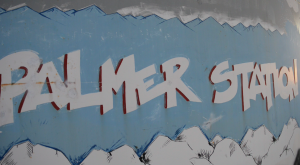 ot mutually exclusive.
ot mutually exclusive.
This past winter Oscar embarked on a three month research voyage to a legendary facility known as Palmer Station: a fully-outfitted scientific research laboratory in one of the harshest, most remote locations on the planet – Antarctica. For those working in marine and climate sciences, Palmer Station is the Holy Grail – some will spend their entire careers preparing, just to get out there for a couple months, if that. Oscar casually refers to it “a summer camp for nerds” – it was a trip he had taken many times before, and is likely to take many times again.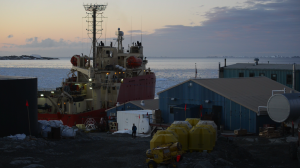
Oscar spoke to us in depth about the life of a scientist at Palmer Station – with a total capacity of around 30 people during the summer months, including scientists and support staff, the Palmer family is closely knit to say the least. Until the moment they go to bed, from the moment they wake up they are working non-stop, and without a sunrise or sunset in the Antarctic Circle they can work for a long time. Oscar even tells us that in the “Wild West” days of Palmer, back in the 70s, there were incidents of people losing their minds and trying to kill their fellow scientists. These days though everyone must submit to psychological evaluations before getting the confirmation to go to Palmer, something that Oscars says, in his offhand way, “is probably a good thing.”
Yet in those rare moments of free time, Oscar tells us you get to see just how much of a shipboard, sailor-culture lifestyle these scientists down at the station really live. There were people who’d try their hand at whittling and scrimshaw – the intricacy in some of these carvings were incredible — and even some who’d go boating, cross-country skiing, and crevassing through the glaciers.
However, through all the work, all the jokes, and all the globally significant climate research taking place in Antarctica’s Palmer Station, being away from his family in New Jersey clearly takes the hardest toll on Oscar. Still they support him, because they know Oscar is going to continue sailing down to the bottom of the Earth to continue his research. No matter what.
Face to Face with Ocean Physics by Film Students Gabrielle Gatdula & Taban Khan
The end of the semester approached as we prepared for our first big interview for Beyond the Ice. We would be interviewing physical oceanographer Doug Martinson about the oceans’ role in climate change. For the students, it would be our first shoot for the project, and we were eager for the hands-on experience. We arrived at the Film Bureau at 7:30 A.M., packed our equipment, and departed for Lamont-Doherty Earth Observatory at Columbia University. It was exciting for us to meet real scientists and interview them for the first time as a team. Prepared with a list of questions for Doug Martinson, his answers were seamless and his stories as a young researcher were thrilling.
Doug was completely different than we expected him to be. As he sat calmly by his desk, he reminisced about his life as a young researcher at a winter ice camp in the Weddell Sea in 1992. He shared with us how he and his team stayed warm in minus 36 degrees weather and wearing eleven layers of clothes. He also told us about the way people died in such freezing weather at camps in the old days. It reminded us of the risks these scientists take to pursue the research they believe is important for us all.
When Doug discussed his research, he gave us a detailed overview about the physics of the ocean and the instruments he uses to measure and observe the ocean. Generally, it is the physical system of the environment that controls the ecology of the oceans. Doug measures the physics, temperature, salinity, currents, and the heat of the continent shelf. He told us that the default standard instrument that physical oceanographers use is the CTD which measures the salinity and temperature, while the moorings are essentially instruments attached to a long rope that are anchored to the bottom of the ocean. Doug also discusses the role of the Antarctic Circumpolar current, a large pool of warm water that circulates around the continent. Wherever it touches the continent, it melts the ice and raises the sea level. This is just one of the ways the ocean influences the Antarctic climate.
The science we learned was dense and heavy stuff, but we couldn’t have learned all of it in a better place than the beautiful Palisades. We couldn’t believe we were given such an opportunity, and we just hope that this shoot was one of just many to come in the future.
Monitoring Sea Ice with Physical Oceanographer Sharon Stammerjohn by Editor & Co-Producer Steven Holloway
The research for a physical oceanographer in the West Antarctic Peninsula (W.A.P.) is a lot more complicated than just simply acknowledging that sea ice is melting. For ocean scientist Sharon Stammerjohn, who – like most of the researchers of the L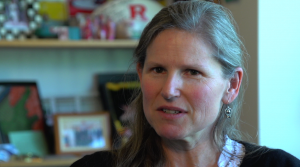 TER – has been visiting Palmer Station since her graduate studies, the complications of climate change and sea ice have been visible throughout her entire professional lifetime. The West Antarctic winter season has grown 90 days shorter since the beginning of the LTER’s recordings, turning up the heat on physical oceanographers like Sharon who stay readily on their toes to collect satellite data of Antarctic ice mass.
TER – has been visiting Palmer Station since her graduate studies, the complications of climate change and sea ice have been visible throughout her entire professional lifetime. The West Antarctic winter season has grown 90 days shorter since the beginning of the LTER’s recordings, turning up the heat on physical oceanographers like Sharon who stay readily on their toes to collect satellite data of Antarctic ice mass.
In an interview with Film Bureau staff members Steve Holloway and Ryan Joseph at the Institute of Marine and Coastal Sciences, Sharon describes the universal sentiment that oceanographers share while studying the dramatically changing sea ice of the WAP. “It’s shocking,” Sharon says. “It’s hard to comprehend that a system is changing as fast as it’s changing.”
Sharon’s research at the Palmer LTER and the Ross Sea represents a larger effort that physical oceanographers are now making to address climate change in the world’s fastest winter warming place. In working in conjunction with other LTER specialists, including biologists like Oscar Schofield, Sharon not only studies the spatial changes of Antarctic sea ice that an ordinary physical oceanographer would examine, she also monitors temporal changes and its impact on the ecology’s wildlife. “I want to know what time in the spring the sea ice is going away so I can relate that to changes that I see in the biological response,” says Sharon. “To have the opportunity to look at a system with other researchers and to be able to put all the pieces together to see how this system is changing holistically over time is an amazing opportunity.”
As a result, Sharon’s macro-view of Antarctica’s shifting geography is now a vital element in understanding how other scientists view climate change.
Similar to the interdisciplinary efforts between student filmmakers and Antarctic scientists producing “Beyond the Ice,” Sharon’s collaborative efforts with other LTER researchers epitomizes the kind of teamwork necessary to address climate change and to effectively make a difference.
The Science Behind the Screen: Oceanographer Oscar Schofield teaches Film Students
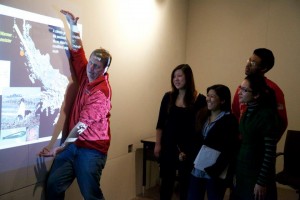
Rutgers Oceanographer Oscar Schofield explains the changing geography of the West Antarctic Peninsula
An average day at work for Biological Oceanographer Oscar Schofield usually consists of monitoring the data collected by self-propelled robots gliding across the Antarctic, or studying the phytoplankton of West Antarctic seas on a world class research vessel.
Yet for the last month, the interdisciplinary collaboration behind the documentary “Antarctica: Beyond the Ice” has lead Oscar and his studies to the most unlikely of places – Mason Gross School of the Arts.
As a part of the film’s post-production process, Oscar has provided lectures to Mason Gross documentary students to teach them the science behind the scenes for their film. Through a series of slide shows and video presentations, Oscar taught the student filmmakers a broad understanding of his research, beginning with the Biological Carbon Pump responsible for rising Antarctic temperatures to the stigmas that many people face while addressing climate change.
The novel meeting between Oscar and the film students, who mainly study English, Journalism, and other humanity concentrations, represent a larger effort that scientists are now making to bring their research to the forefront of mainstream consciousness. “We are losing the communication war on global warming,” Oscar told film students on his first lecture, hoping that this film collaboration between students and scientists will be a tool for social change and environmental policy. Oscar encourages the filmmakers that negative environmental impacts have been reversed by policymakers in the past, citing 1989’s Montreal Protocol that has successfully yielded the depletion of the Earth’s Ozone Layer. With this mind, pressure is a bit of an understatement for the students editing this important documentary.
A Glimpse into Donna Fraser’s Life as a Penguin Biologist, by film student Taban Khan
A completely different part of the world, white snowy hills and mountains, thousands of penguins and seals, surrounded by miles and miles of sea ice, the Western Antarctic Peninsula is not what we assume it to be. It is a place that has changed drastically every decade due to the warming of the planet. This has altered the lifestyles of the inhabitants of the islands, especially the penguins. When “Beyond The Ice” was launched, I knew that I wanted to learn about the penguins out there. My honest thought was…are they similar to the ones in Happy Feet 1 and 2? Like happy and healthy Antarctic penguins on white snow that could flap their wings and dance (maybe I’m exaggerated a little bit)!
Watching Donna Fraser’s interview and the work she does, I learned about the three types of penguins that are being studied in Palmer Station: the Adelies, the Gentoos, and the Chinstraps. I have the opportunity to put together a short film about Donna and her research with the Adelie penguins of Humble Island. As Donna talked about how their population has reduced by 80-85% in the last ten years, I couldn’t help but feel for these penguins living in an environment with little snow. There are green patches where there never used to be and multiple snowfalls and precipitation, something Adelies are not used to. There are also less silverfish than before, and silverfish used to be common in their main diet. Adelies now mainly eat krill, and silverfish has almost disappeared in their diets. Donna and her team of researchers help place radio tags on penguins so that their flight and forage trip duration is measured. This includes a lot of interaction with the penguins, like measuring their beak sizes, weight, diets, diving depths and applying this information with the rest of the data of the long term ecological project to see what is going on in the ecosystem and how the penguins are being affected.
Donna Fraser’s research is very new to me and there’s a lot of science involved, but her work is very inspiring because these scientists have been researching for years. As Donna says, “it’s invaluable to have the long term view of how penguins fit into the system and what we can learn about the system through the penguin’s eyes.” “Beyond The Ice” has given me opportunity to apply what we have learned in our documentary filmmaking classes and use it to craft together a story. I’m very grateful that we are allowed to be creative and hope to discover a great deal about the aspects of editing and filmmaking. It’s very exciting to work with real stories in the Rutgers Film Bureau this semester!
The Birders on Avian Island by film student Kyra Willans
My segment follows Cameron and Jen, two ornithologists or “birders” who spend
five days on Avian Island studying the Adelie penguin colony that inhabits the island.
The segment will explain who these scientists are, what they do, and why they
do it. In short, these two scientists have the responsibility of collecting data on the life
cycle of the Adelie penguins in order to determine the population’s overall health. This
means they’re getting down and dirty, taking a census of the entire colony, weighing
chicks, collecting food and excrement samples, among other things. This information is
important to environmental research because, as this segment will explain, the health of
the Adelie penguin population directly corresponds to the changing climate.
Jen and Cameron’s stay on Avian Island was full of many exciting moments that I
hope to include in my segment. The island was home to many challenges including seals
that threatened to roll over their tents, an onslaught of attacks from pestering skua birds,
terrain that is unfriendly to humans, and the isolation from civilization and help. This
isn’t your typical laboratory science work.
Cameron and Jen are refreshingly personable characters tasked with a both
exciting and important job. I have ample material to produce a segment that is both
entertaining and informative.
Working on Beyond The Ice has provided me with an opportunity to challenge
myself as a storyteller by working with subject matter which was previously foreign to
me. While working on this project I’ve learned a lot about marine science and biology
and I’m now faced with the task of relaying this material to a wide audience. I’m
fortunate to be able to be able to construct a story completely on my own and make
my own creative choices as a student in the Digital Filmmaking Program at Rutgers
University.
Science and the Big Picture: film student Gabby Gatdula on Beyond the Ice
For the Beyond the Ice project, I’ve been working on putting together a story about Oscar Schofield, a biological oceanographer hailing from the Rutgers Marine and Coastal Sciences department who specializes in studying phytoplankton. For my scene, it’s not so much about the nitty gritty details of the science involved in studying West Antarctic Peninsula– it’s about the big picture and what the science they’re doing down there means for the global ecosystem and human society in the future. The LTER is unique in that they have all the “pieces to the puzzle” since all the scientists down there study different things down there from the whales to the Adelie penguins. What they hope for is that by pulling together all these studies, they can provide insight into what it all means for the system as a whole. They believe what they’ve been studying is an indication of climate change, but only through their long term work can they provide that evidence. Oscar summarizes all of this succinctly and he does a great job of making even those unfamiliar with science understand.
Beyond the big picture of why the LTER’s work matters on a global scale, the other part of my story concerns Oscar himself and how he has changed as a person. He feels protective and invested in the LTER since he’s been involved with it for so long, and he’s been mentored by the people that began this project. They’re also a second family to him, and he loves his crew very much. Furthermore, Oscar has made a lot of personal sacrifices to be down there, and he’s not just doing this for himself as a scientist, but for his family, his students, and the generations to come. The LTER means more to him than my words on a blog can explain.
I don’t feel anywhere close to being done with my scene, but I think I’ve finally gained a sense of how I want to interweave the importance of the LTER to the science and world community and its importance to Oscar. I’ve been handling Oscar’s main interview footage, and the real challenge has been taking such a meticulous and detailed interview and sizing it down to its most important elements. Raw footage is nothing without a story to shape it, and I think I’m finally finding that story. More than anything, this project’s been teaching me the importance of editing to shaping a story, and I just hope that I’ll come out a stronger editor after all is said and done.
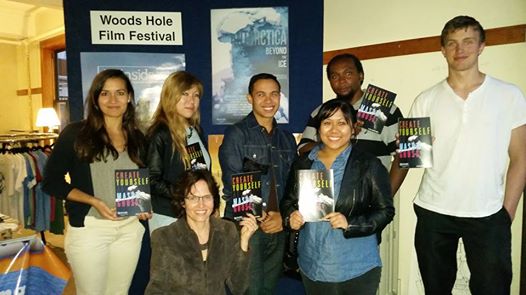
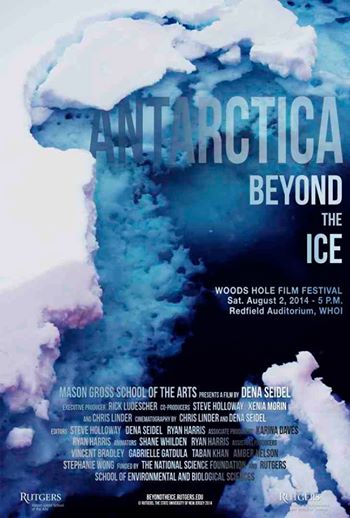
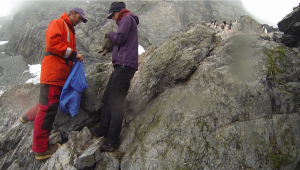
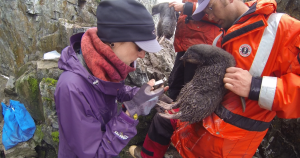
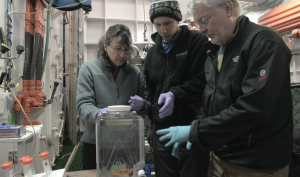
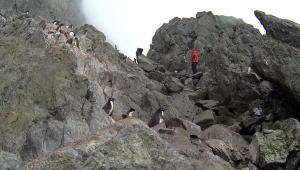

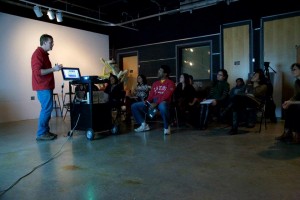
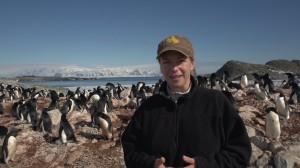
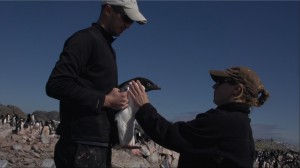
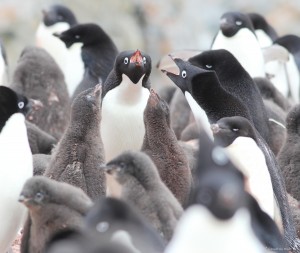
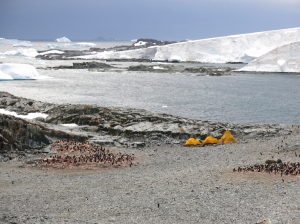
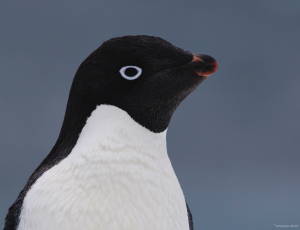
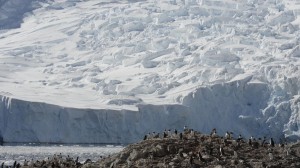



 Follow the
Follow the  Subscribe to the blog RSS feed
Subscribe to the blog RSS feed